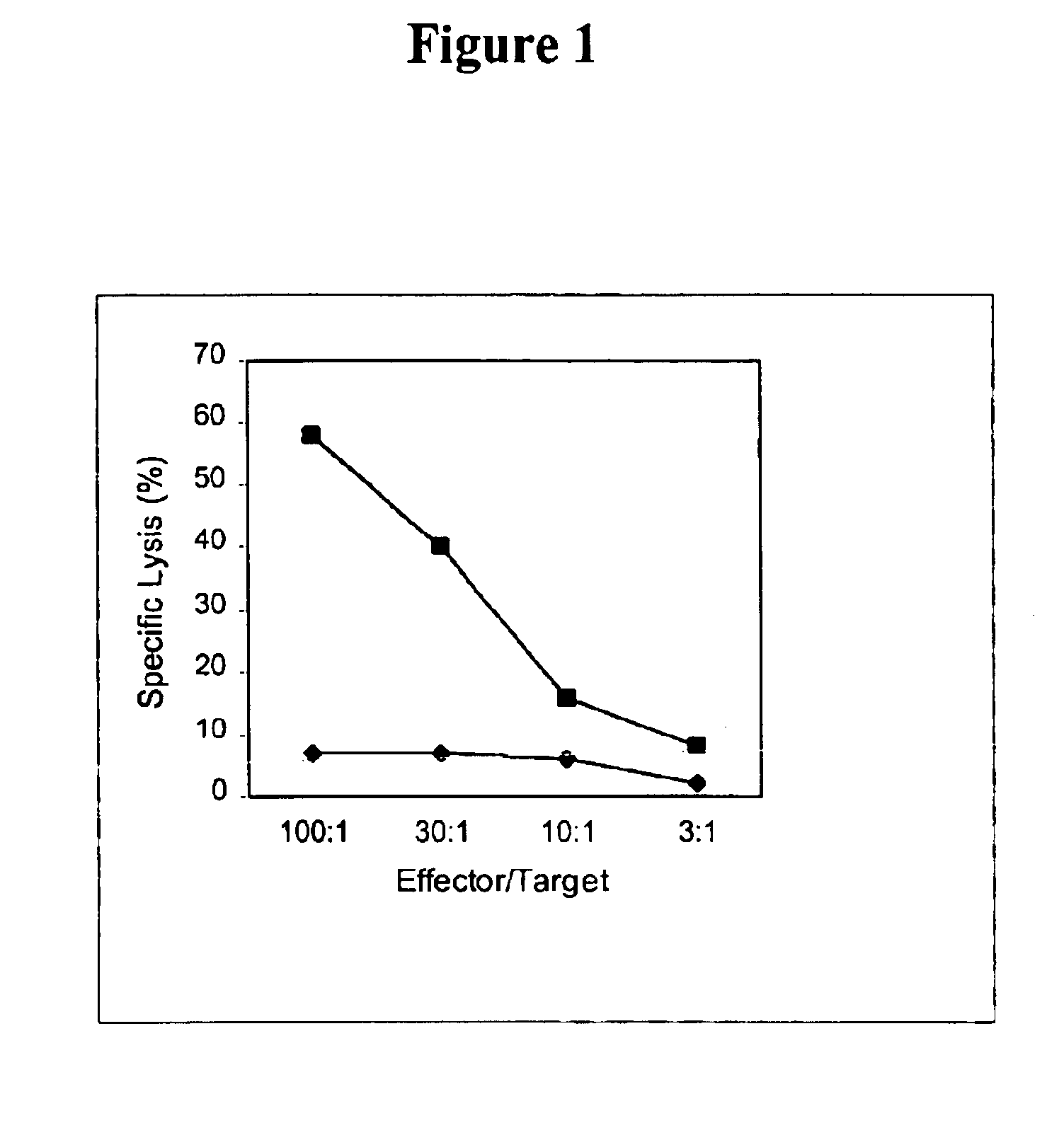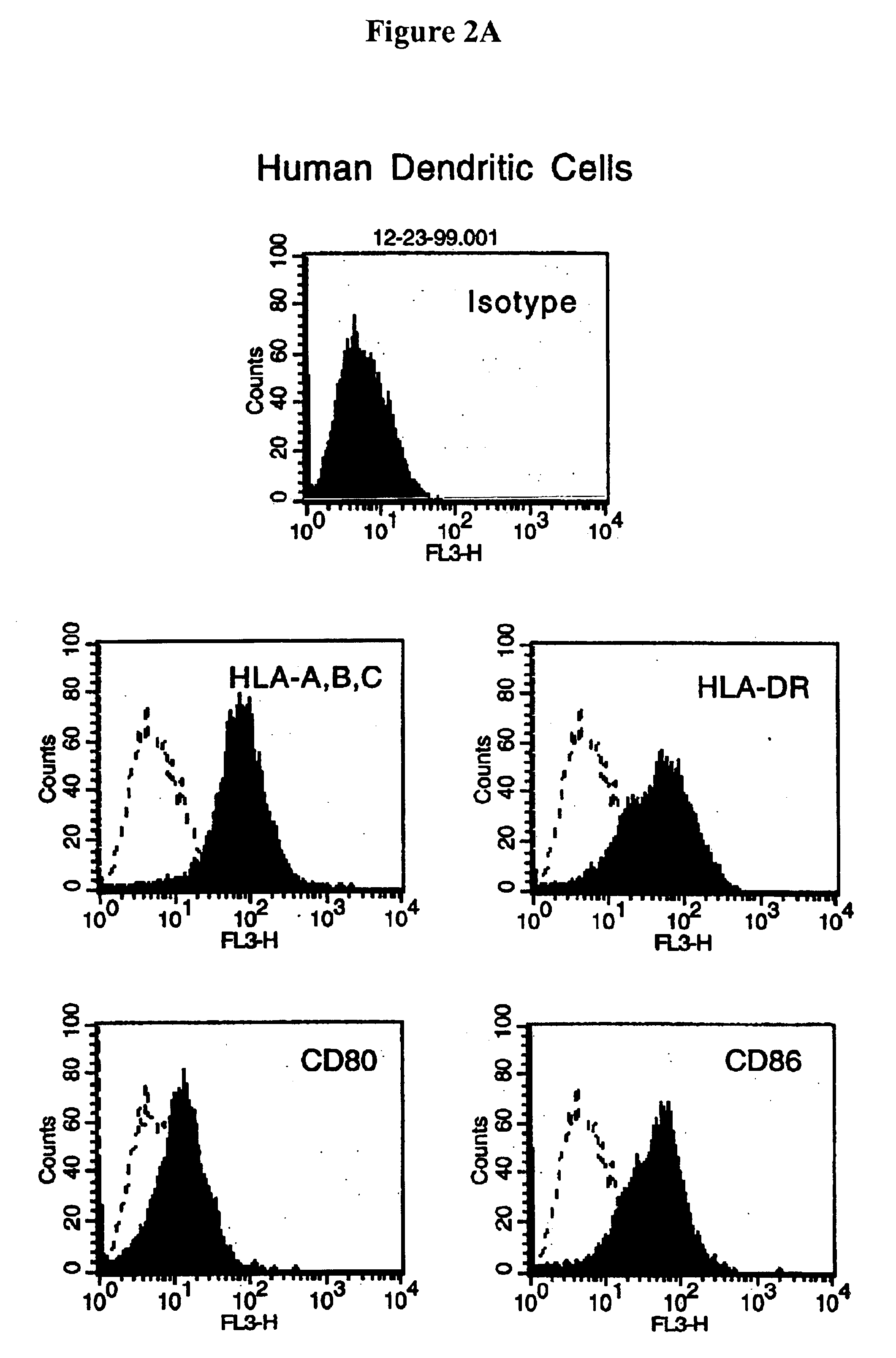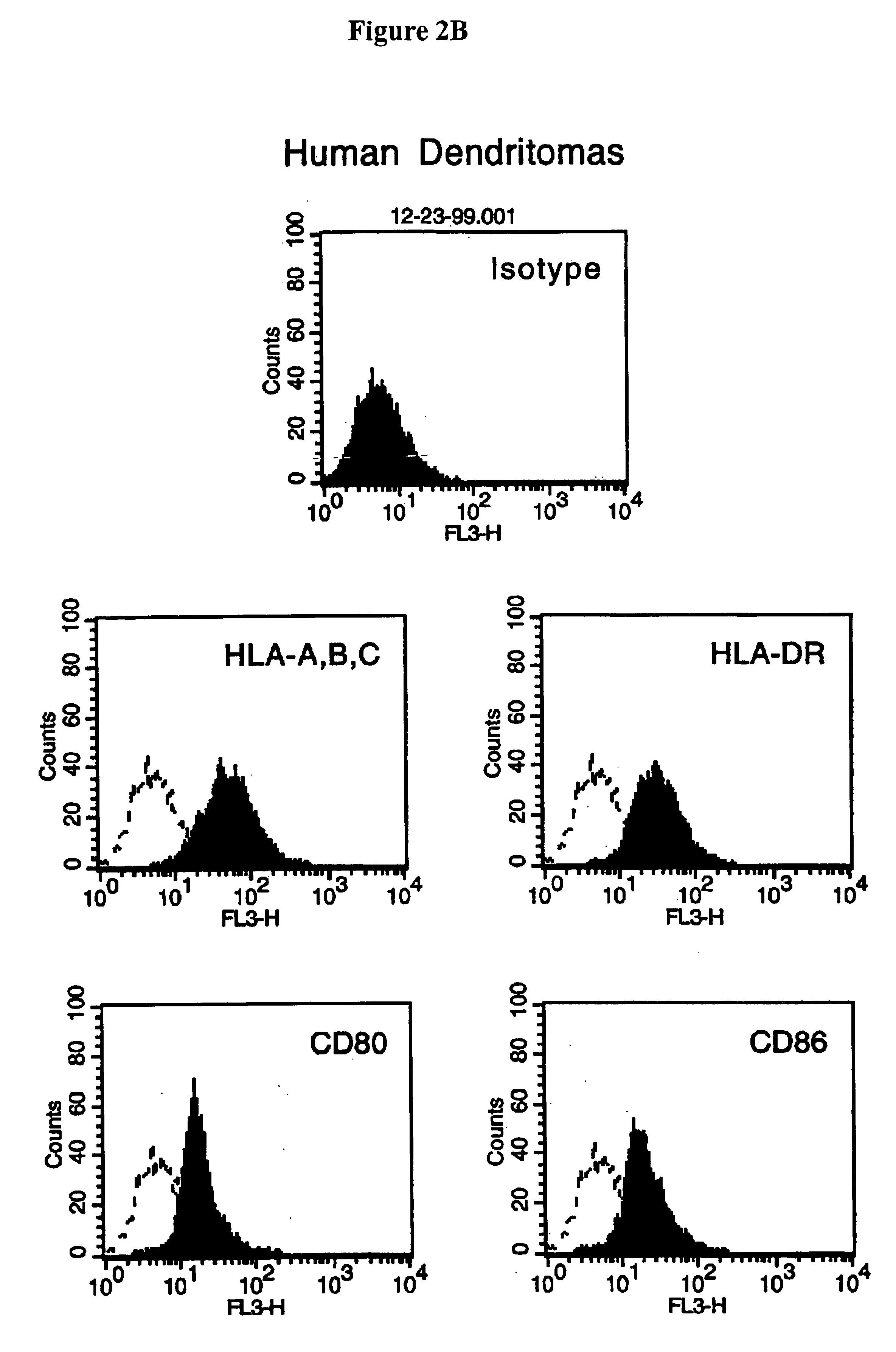Hybrid cells
a hybrid cell and cell technology, applied in the field of hybrid cells, can solve the problems of inability to apply in a clinical treatment setting, inability to achieve the effect of antigen-specific anergy, and inability to achieve the effect of autologous whole tumor cell-based vaccines alone,
- Summary
- Abstract
- Description
- Claims
- Application Information
AI Technical Summary
Benefits of technology
Problems solved by technology
Method used
Image
Examples
example 1
Animal Studies
This example demonstrates the preparation of certain hybrids between cancer cells and dedritic cells, called dendritomas. These hybrids are used as a cellular vaccine to prevent cancer in a murine metastatic cancer model system.
To prepare dendritic cells from bone marrow, the appropriate number of female C57BL / 6J. mice to support later Dendritoma injections (two mice for every one mouse to be injected) were sacrificed. The femur and tibia of both hind legs were removed from each mouse. Bone marrow was flushed out of the bones using a syringe containing RPMI 1640 with 25 mM Hepes (Gibco BRL). The media containing the bone marrow was filtered through a 40 μm cell strainer into a 50 ml conical centrifuge tube. The bone marrow cells were pelleted by centrifugation at 1500 rpm for five minutes. After removing the supernatant, the tube was gently tapped to loosen the cell pellet. Red blood cell lysis was achieved by adding 5 ml / mouse of ACK Lysing Solution (0.15 M NH4Cl, 1 m...
example 2
Human Studies
This example demonstrates that the inventive dendritoma hybrid cells induce a cancer cell-specific cytotoxic T cell response. This offers proof of principle that these hybrid cells can induce a therapeutically meaningful immune response against a tumor.
In order to enhance the number of dendritic cells, which were isolated from peripheral blood, a panning technique using anti-CD14 coated plates was utilized. Five hundred micrograms of anti-CD14 antibody was resuspended in 5 ml of 1× PBS with BSA (700 μg of BSA per 100 μl of antibody). A 100 mm tissue culture plate was coated with 5 mls of the antibody. The plate was swirled and incubated for one hour at room temperature or overnight at 4° C. The antibody solution was removed, and the plate was washed five times with 5 mls of 1× PBS.
Peripheral blood mononuclear cells (PBMC's) were isolated from whole blood by obtaining 50 ml of peripheral blood from the patient in preservative-free or sodium heparin tubes. The blood was d...
example 3
Dendritoma Characterization
This example provides further characterization of the reactant cells and the dendritomas described in Examples 1 and 2.
Fluorescent microscopic analysis showed that 100% of the stained cells were successfully labeled. To test whether the dye can interstain between the two different type of cells, green DCs and red tumor cells were mixed together and incubated overnight. Fluorescent microscopic examination showed there was no interstaining. Immediate examination of the fusion product demonstrated that the green DCs and the red tumor cells were fused together and after an overnight recovery, the fused cells showed both colors. The double colored cells (approximately 10% of the total cells), instant dendritomas, were then purified by FACS sorting. More than 95% of the sorted cells were double colored fused cells.
Instant dendritomas express all the molecules necessary for antigen presentation. FACS analysis showed that instant dendritomas express the molecules ...
PUM
| Property | Measurement | Unit |
|---|---|---|
| time | aaaaa | aaaaa |
| temperature | aaaaa | aaaaa |
| fluorescence activated cell sorting | aaaaa | aaaaa |
Abstract
Description
Claims
Application Information
 Login to View More
Login to View More - R&D
- Intellectual Property
- Life Sciences
- Materials
- Tech Scout
- Unparalleled Data Quality
- Higher Quality Content
- 60% Fewer Hallucinations
Browse by: Latest US Patents, China's latest patents, Technical Efficacy Thesaurus, Application Domain, Technology Topic, Popular Technical Reports.
© 2025 PatSnap. All rights reserved.Legal|Privacy policy|Modern Slavery Act Transparency Statement|Sitemap|About US| Contact US: help@patsnap.com



